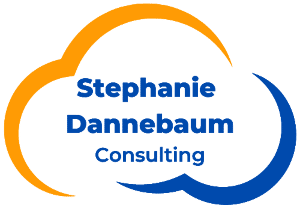Before your team builds workflows in your CRM, it is important to brainstorm or “whiteboard” your steps, tasks, and outcomes.
Order some burgers, sit down with your team on a Friday afternoon, and hash out your workflow process. Not only is it more efficient to build your workflow offline first, but it fosters the most important indicator of workflow success–buy in!
If you sit down with your team and think of a process together, it allows each person to speak their part into the process. As well as any potential hiccups along the way.
Adoption increases use, enjoyment, and improvement of the workflows in place.
*Note: Workflows are a living, breathing process that will continue to adjust as your team changes, the industry changes, and legislation changes.
Once everything is hashed out, building in the CRM system is a straightforward task that can be done with the help of Stephanie Dannebaum Consulting. And if you do not feel like building the workflows from scratch, Stephanie Dannabaum Consulting offers a luxury, concierge pack of workflow templates built according to each office and their corresponding CRM. We customize and streamline all the tools available at your disposal, using all the best practices we’ve gathered in working with offices. We’re also more than happy to consult with you as you whiteboard a process.
The front-end work required for building workflows provides a gigantic return on investment in the form of:
- Saved Time
- Saved Clicks
- Higher Level of Customer Service
- Improved RIA valuation
- Faster Staff Onboarding
What is a CRM Workflow?
A Workflow is a step-by-step procedure that’s repeatable over and over again.
Typically you’re doing the same thing, over and over again, when you do the following:
- Host a Client Review
- Onboard a Prospect
- Host an Event
- Gather Contact Information
Workflows provide a central, cloud-based location for all processes to live, reducing the risk of losing information when someone goes on vacation or leaves the team abruptly. By investing time upfront to whiteboard the processes, including tasks, steps, and potential outcomes, financial advisors can ensure a higher level of consistency, efficiency, and customer satisfaction.
What is Whiteboarding?
Whiteboarding is the act of drawing out how your process looks, with every possible outcome for each step.
We do not live in a perfect world. If someone is tasked to call a client to confirm a meeting, there may be a 50% chance that the meeting is confirmed successfully or there may be a 50% chance that the meeting needs to be rescheduled. Building those possibilities into your workflow will allow you to skip, repeat, or move in a linear progression in your workflow.
You can use one of the following methods to mind map a Workflow:
- A Physical Whiteboard
- Post-It Notes
- Online Tools
- Word Document
Have fun with it! And listen to each member of your team to assure buy-in.
6 Questions to Answer When Whiteboarding a CRM Workflow
- What initiates each step?
- Once accounts are populated to your firm is that when you start onboarding? Is a client review held annually or quarterly? You might be able to introduce other helpful tools like, automations, if you figure this question out.
- What is the target date?
- Is your process centered around a specific date, like the event date or meeting date? Does the preparation need to happen X amount of days before and the follow-up X amount of days after? Using the target date as the date of an event can make a reschedule adaptable by changing the target date and all the other dates will automatically adjust.
- What are the various steps involved?
- Steps are typically the stage. Are you in the preparation stage? The follow-up stage? The review day stage? That can help provide a list of items to complete based on the stage you’re in.
- What are the tasks needed to complete each step?
- Tasks are the individual to-do items assigned to different usernames. This will hold each person accountable for their part in the process.
- What could the outcomes be for each step
- Typically you want to add at least 3 outcomes. One is the perfect world scenario where everything is completed successfully. Two is a way to go back or repeat a step if something is not in good order. Three is a way out of the workflow. Maybe you meet with a client quarterly and they just don’t want to meet at all that quarter, you can end the workflow but at least document your attempt to meet with them.
- What do you need to do after each outcome?
- Do you need to communicate with a teammate for a cancellation? Do you need to change the time and date of an activity? Discussing your expectations beforehand can build a trusted process.
Our Customized Whiteboard Diagrams & Workflow Templates
Financial advisors and administrative staff face a common problem of relying on memory to keep track of internal and client-facing processes. Keeping a process in one’s head is not a best professional practice, as it leads to inconsistent customer service, inefficiencies in time management, and can negatively impact your RIA valuation.
The solution to this problem is to build out workflows in your CRM.
Financial advisors who build out their processes are better prepared to onboard more staff and clients, leading to increased success. Don’t leave your processes to chance – build them out in a CRM system with the help of Stephanie Dannebaum Consulting. We offer customized whiteboard diagrams and workflow templates for both Redtail Technology and Wealthbox CRM. Schedule a discovery call today!




